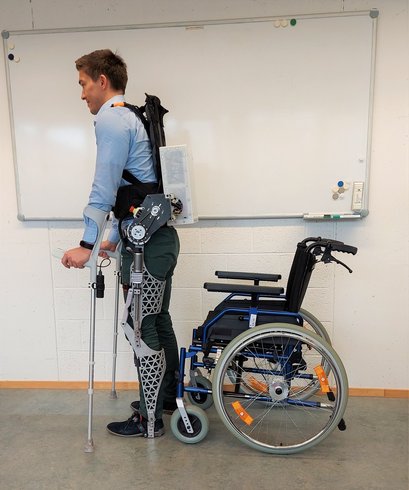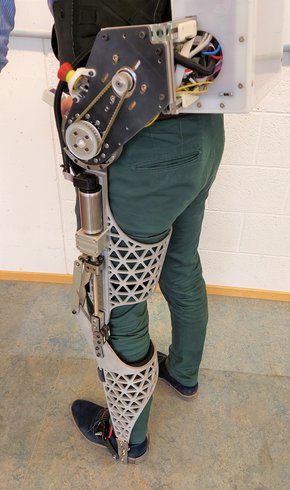Robotic Exoskeletons
Project title
Development of patient-specific lower limb Exoskeletons for Paraplegics


Goal
Maximization of the biomechanical compatibility of robotic exoskeletons for paraplegics though customized light-weight structures and kinematics
Contact
M.Sc. Konstantin Strübig (wiss. Mitarbeiter)
Application
Robotic exoskeletons for paraplegics, which allow them to stand up and walk
Research topic
Automated design of lightweight structures based on anthropometric and kinematic measurements
State of the art
Heavy and complex exoskeletons with limited adjustability and simple monocentric joints
Drawbacks of the State of the Art
Insufficient biomechanical compatibility due to joint misalignments between the exoskeleton and the user leads to constraint forces in the user's joints and skin irritations
The exoskeletons has to be manually adjusted by an expert for each user in an iterative process, while the adjustment options increase the complexit and weight of the device
Concept
The individual biomechanics of the user are measured using motion tracking technology
Based on these measurements, an opimized exoskeleton kinematic including a polycentric knee joint are developped
The structural elements of the exoskeleton are then automatically designed to match the determined kinematic and are manufactured using aluminium casting in additively manufactured sand molds
Current Results
The first prototype is operational, while the automated measurement and design processes are under evaluation